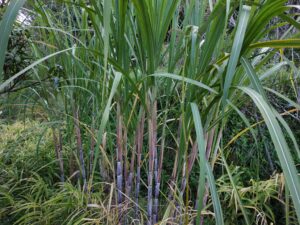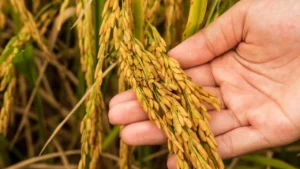
In this post, I will share the agronomy of sesame and its integrated pest management strategies.

Introduction:
- Sesame cultivated for millennia for its versatile seeds.
- Warm-season crops need a long, hot growing period.
- Thrives in well-drained soil with pH 6.0-7.5.
- Requires consistent moisture, often necessitating irrigation.
Biology:
- Sesame is native to Africa and Asia but cultivated globally.
- Adaptable to various environments, from arid to tropical regions.
- Utilized in culinary, oil production, traditional medicine, and cosmetics.
- Sesame oil is prized in Asian cuisine for its nutty flavour and high smoke point.
- Increasing interest among farmers for its sustainability and diverse applications.
Benefits and Uses of Sesame:
- Blog post to delve into sesame’s benefits, uses, cultivation, and processing.
- Examining challenges and opportunities for sesame cultivation globally.
- Emphasis on seedbed preparation for optimal sesame growth.
- Soil should be well-tilled, weed-free, and debris-free.
- Shallow planting depth of 1-2 cm for good soil contact.
Fertilization
- Fertilization is crucial in sesame production.
- Sesame is a light feeder, needing moderate NPK levels.
- Excessive nitrogen can hinder seed yield, promoting vegetative growth.
- Fertilization requires careful management to prevent overapplication.
Weed control
- Weed management is critical in sesame production.
- Sesame lacks competitiveness, requiring early and frequent weed control.
- Weeds can compete with sesame for water and nutrients.
- Herbicides are commonly employed for weed management in sesame fields.
Disease and pest management
- Disease and pest management are crucial in sesame production.
- Susceptible to fungal and viral infections, as well as pests like thrips, aphids, and spider mites.
- Integrated pest management (IPM) strategies are essential.
- Techniques include crop rotation, pest-resistant varieties, and biological control agents.
Chewing insect pests of sesame
- Sesame is susceptible to various chewing insect pests: cutworms, armyworms, grasshoppers, and beetles.
- Cutworms damage seedlings by cutting them at the base, controlled via insecticides or cultural methods.
- Armyworms cause severe defoliation, controlled by insecticides or cultural methods like well-drained soils.
- Grasshoppers feed on leaves, stems, and pods, controlled by insecticides or cultural methods like barrier crops.
- Beetles, like sesame leaf beetle and blister beetle, feed on leaves, controlled by insecticides or cultural methods like low-population fields.
- Effective pest management necessitates monitoring and a blend of cultural, biological, and chemical control methods.
- Understanding specific pests and implementing appropriate strategies vital for damage reduction and optimal yields.
Integrated pest management
- Integrated pest management (IPM) minimizes pest impact while reducing pesticide use and environmental harm.
- IPM combines cultural, biological, and chemical methods for sustainable pest management.
- Cultural methods include crop rotation, using pest-resistant varieties, soil management, and optimized irrigation.
- Biological methods use natural enemies like predator insects or parasitic wasps to control pests.
- Chemical methods involve pesticide use, minimized and carefully managed in IPM to reduce environmental impact.
- Pesticides are used only when necessary, non-chemical methods are preferred.
- Monitoring crops essential for early pest detection and decision-making.
- Decision-making involves assessing pest pressure, controlling impacts, and selecting appropriate methods.
How is IPM good for sesame?
- IPM is ideal for sesame due to its susceptibility to various damaging insect pests.
- Sole reliance on pesticides insufficient may lead to resistance and environmental harm.
- IPM employs diverse control methods: cultural, biological, and chemical.
- Cultural methods like crop rotation, pest-resistant varieties, and optimized irrigation reduce pest pressure.
- Biological methods like predator insects or parasitic wasps decrease pest populations sans pesticides.
- IPM mitigates environmental impact by minimizing pesticide use and careful management.
- Reducing negative impacts on non-target organisms, water quality, and soil health is crucial.



